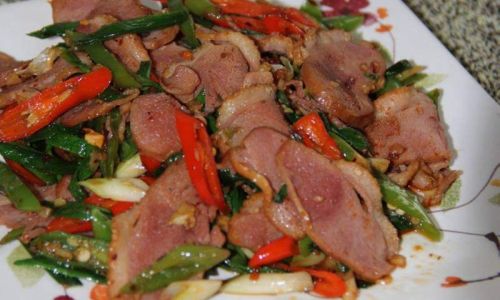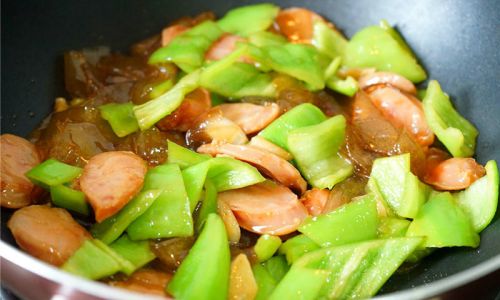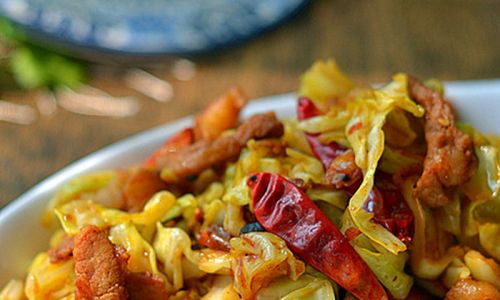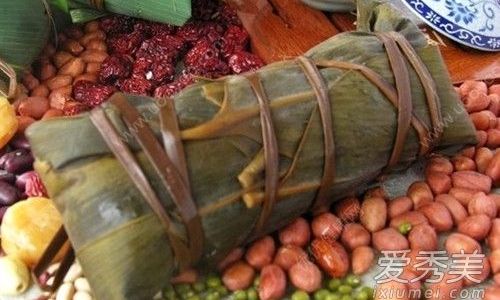Table of content
Stir-frying is a cornerstone of many global cuisines, prized for its ability to transform simple ingredients into vibrant, flavorful meals. Among the myriad proteins suited to this technique, pure meat sausages stand out for their robust taste and versatility. Whether you prefer the smoky richness of pork, the bold intensity of beef, or the lean appeal of chicken sausages, these processed meats offer a satisfying foundation for stir-fry dishes. This article delves into the nuances of crafting a memorable stir-fry using pure meat sausages, exploring ingredient selection, preparation techniques, and creative flavor pairings. By the end, you’ll be equipped to elevate this humble ingredient into a restaurant-worthy dish.
Understanding Pure Meat Sausages
Before igniting the stove, it’s essential to grasp what defines a “pure meat” sausage. Unlike blended or seasoned varieties, these sausages prioritize meat quality, typically containing minimal fillers, preservatives, or artificial additives. Common types include:
- Pork Sausages: Renowned for their juicy texture and mild sweetness.
- Beef Sausages: Offering a heartier, more pronounced flavor.
- Chicken Sausages: A leaner alternative, often infused with herbs or spices.
When selecting sausages for stir-frying, opt for fresh, high-quality links. Pre-cooked varieties can save time but may lack the depth of flavor achieved by searing raw sausages. For optimal results, choose sausages with a balanced fat-to-meat ratio, as fat contributes to caramelization and tenderness during cooking.
Essential Ingredients and Tools
A stellar stir-fry hinges on harmonizing flavors and textures. Below is a breakdown of key components:

Protein Base: The Sausages
- Quantity: 1–1.5 pounds (450–675 grams) of sausages, sliced into bite-sized coins or diagonal strips.
- Preparation: Remove casings if desired, though leaving them intact can prevent the meat from drying out during cooking.
Aromatic Vegetables
- Onions: 1 medium, thinly sliced (yellow or red onions add sweetness).
- Garlic: 4–6 cloves, minced (adjust to taste).
- Ginger: 1 tablespoon freshly grated (or 1 teaspoon ground ginger).
- Chilies: 1–2 fresh red or green chilies, sliced (optional, for heat).
Stir-Fry Vegetables
- Cruciferous: Broccoli, cauliflower, or bok choy (1–2 cups, chopped).
- Crunchy: Bell peppers, carrots, or snap peas (1–2 cups, julienned).
- Aromatic: Mushrooms (shiitake or button), sliced (1 cup).
Sauces and Seasonings
- Soy Sauce: 2–3 tablespoons (low-sodium for control).
- Oyster Sauce: 1–2 tablespoons (adds umami).
- Sesame Oil: 1 teaspoon (toasted for depth).
- Rice Vinegar: 1 tablespoon (balances richness).
- Sugar: 1 teaspoon (optional, to mellow acidity).
Starch and Garnishes
- Cooked Rice or Noodles: To serve (2–3 cups).
- Fresh Herbs: Cilantro, basil, or green onions (chopped).
- Nuts: Toasted sesame seeds or crushed peanuts (for texture).
Tools
- Wok or Large Skillet: Ensures even heat distribution.
- Sharp Knife: For precise slicing.
- Spatula: Preferably metal, for stirring without damaging the pan.
Step-by-Step Cooking Process
Preheat the Pan
Heat your wok or skillet over high heat until a drop of water evaporates instantly. Add 1–2 tablespoons of neutral oil (vegetable or canola) and swirl to coat the surface.
Sear the Sausages
Add the sausage slices in a single layer, ensuring they make direct contact with the pan. Avoid overcrowding, as this lowers the pan’s temperature and steams the meat instead of searing it. Cook for 3–4 minutes per side until golden-brown. The goal is to achieve caramelization, which intensifies the meat’s savory notes. Remove the sausages and set aside.
Stir-Fry Aromatics
Reduce the heat to medium and add a touch more oil if needed. Toss in the onions, garlic, ginger, and chilies (if using). Stir-fry for 1–2 minutes until fragrant but not browned. The kitchen should now fill with the intoxicating aroma of toasted aromatics.
Introduce Vegetables
Add the firmest vegetables first (e.g., broccoli, carrots), followed by quicker-cooking ones (bell peppers, mushrooms). Stir continuously to prevent burning. For a hint of char, allow vegetables to sit undisturbed for 20–30 seconds between stirs.

Reintegrate the Sausages
Return the seared sausages to the pan, tossing gently to combine with the vegetables. This step allows the meat to reabsorb some of the pan’s residual flavors.
Deglaze and Season
Pour in the soy sauce, oyster sauce, rice vinegar, and sugar (if using). Scrape the pan’s bottom to dislodge any caramelized bits—these are flavor gold. Allow the liquid to reduce slightly, coating the ingredients in a glossy sauce.
Finish with Freshness
Drizzle with sesame oil and toss in half of the fresh herbs. The sesame oil should be added off the heat to preserve its delicate aroma.
Serve Immediately
Pile the stir-fry over rice or noodles. Garnish with remaining herbs, nuts, and a squeeze of lime (if desired). The contrast between the seared sausages, crisp vegetables, and aromatic herbs is key to a balanced bite.

Pro Tips for Stir-Fry Mastery
- Temperature Control: High heat is non-negotiable for stir-frying. It sears meat, caramelizes vegetables, and evaporates excess moisture, preventing sogginess.
- Mise en Place: Prep all ingredients before lighting the stove. Stir-frying moves quickly, and overcooked vegetables can ruin the dish.
- Sauce Ratios: Taste and adjust seasonings before serving. A splash of water or broth can loosen a too-thick sauce, while a pinch of sugar can temper overpowering saltiness.
- Protein Variations: Experiment with spicy Italian sausages, smoked kielbasa, or even vegetarian alternatives like soy-based links.
- Leftovers: Stir-fries reheat well, but avoid overcooking vegetables initially if anticipating leftovers.
Creative Flavor Pairings
- Spicy Sichuan-Inspired: Add Sichuan peppercorns, doubanjiang (chili bean paste), and a handful of dried red chilies. Serve with steamed jasmine rice.
- Garlic Lover’s Delight: Double the garlic and finish with a generous handful of fried garlic chips.
- Mediterranean Twist: Swap soy sauce for balsamic glaze, toss in sun-dried tomatoes, and garnish with feta cheese.
- Sweet and Sticky Glaze: Mix honey, soy sauce, and a splash of orange juice for a teriyaki-inspired finish.
Troubleshooting Common Issues
- Soggy Sausages: Overcrowding the pan or insufficient heat causes steaming. Cook in batches if needed.
- Burnt Aromatics: Garlic and ginger burn easily. Add them after the initial vegetable stir-fry to prevent scorching.
- Bland Flavor: Ensure proper seasoning and consider adding a splash of fish sauce or a sprinkle of MSG (monosodium glutamate) for umami.
The Science Behind Stir-Frying
Stir-frying is more than just tossing ingredients in a pan—it’s a culinary technique rooted in chemistry. High heat rapidly denatures proteins in the sausages, creating a Maillard reaction that develops complex flavors. Vegetables retain their vibrant color and crunch due to minimal cooking time. The rapid evaporation of moisture prevents the dish from becoming waterlogged, ensuring each ingredient’s unique texture shines.
Cultural Context and Modern Adaptations
While stir-frying is synonymous with Asian cuisine, its principles transcend borders. In Europe, similar techniques appear in dishes like chorizo con judías (Spanish sausage with beans), while in America, Cajun-style smoked sausage jambalaya reflects a fusion of flavors. Modern chefs often reinterpret stir-fries using global ingredients, from halloumi cheese to quinoa, proving the method’s adaptability.
Conclusion
Stir-frying pure meat sausages is a gateway to creating restaurant-quality meals at home. By mastering heat control, ingredient pairing, and seasoning, you can transform a simple sausage into a symphony of textures and flavors. Whether you adhere to tradition or embrace experimentation, this technique rewards curiosity and practice. So, grab your wok, sharpen your knife, and let the sizzle of searing meat guide you to culinary triumph. Bon appétit!





0 comments